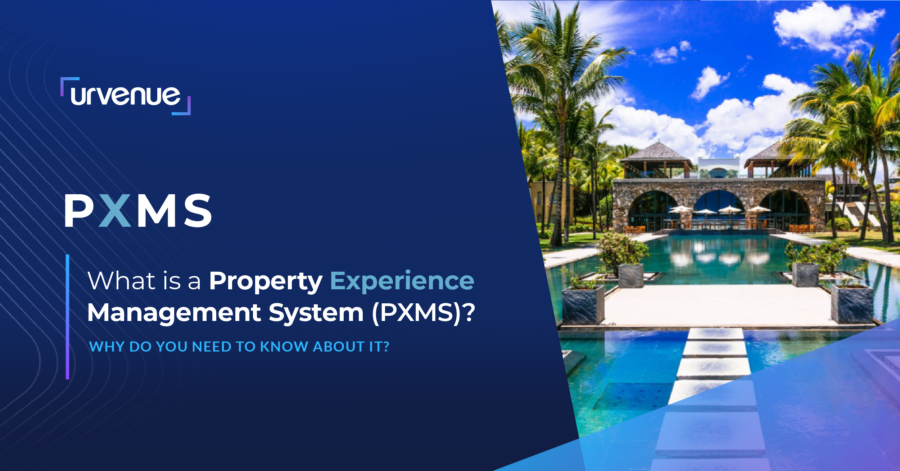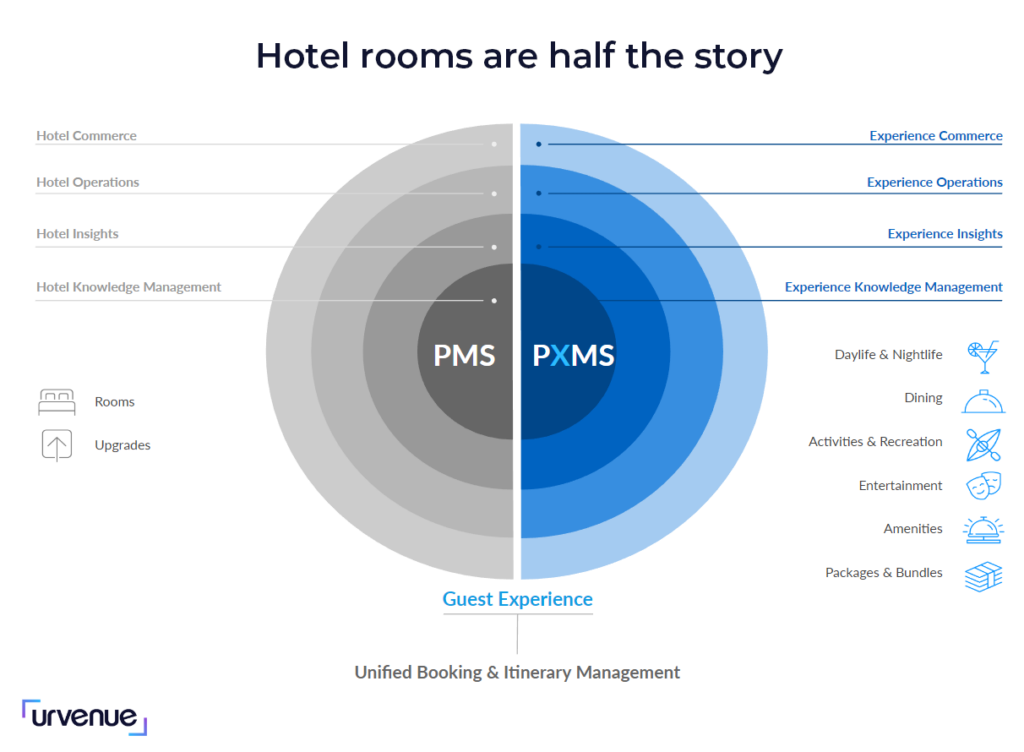What is a Property Experience Management System (PXMS)? Why Do You Need to Know About It?
Get the Full PDF Version

Technology & the Hospitality Industry
There is a natural evolution between an industry and the technology that supports it. As the technology grows, an industry develops new pathways to utilize that growth and, in turn, creates new opportunities for the technology to mature and progress. It’s a symbiotic relationship that drives continuous innovation.
While we often think of it as a single industry centered around hotel reservations, the hospitality industry spans multiple, complementary industries, including lodging, food & beverage, entertainment, and recreation. Resort leaders are quick to adopt new technology platforms and innovations to manage their day-to-day business needs. As a result, resort leaders often use a multitude of unintegrated technology solutions specific to each type of ancillary experience, leading resorts to use one system for restaurant reservations, one system for live entertainment, one system for pool rentals, and so on.
These siloed systems then lead to siloed guest experiences, siloed operational processes, and siloed employees. To book multiple experiences, guests jump from website to website, encountering a fractured booking journey that limits their understanding of what the property has to offer.
Resort leaders often adapt their operations to each system’s specific capabilities, creating discrepancies between departments. Finally, switching between multiple systems steepens employee learning curves and decreases employee retention.
However, it does not need to be this complicated.
Property Experience Management System (PXMS)
A Property Experience Management System (PXMS) is a new software category for hotels and resorts to easily manage and monetize their experience offerings. Just like a Property Management System (PMS), a PXMS is a full-cycle solution platform. Instead of managing everything related to the hotel rooms, a PXMS allows resort leaders to sell their experience-based inventory and to do so with as much flexibility as they have today with their rooms.
They are able to manage inventory such as pool-side cabanas, restaurant reservations, lounge tables, small conference rooms, and equipment rentals. They are able to sell this inventory as packages or a la carte bookings. They can sell multiple experiences not only in the same booking channel, but also in the same shopping cart.
At the same time, resort leaders can then apply battle-tested revenue management strategies like yielding, personalized quotes, and upfront deposits across all of their inventory.
A PXMS can also integrate with PMSs and any other best-in-breed solutions, such as OpenTable and Stripe, that operators wish to continue to use, connecting the dots between all of the key guest touchpoints. A good PXMS can even go beyond the capabilities of a PMS, utilizing Interactive 3D Maps and allowing guests to choose the exact location of the cabanas or private dining rooms.

A PXMS is a powerful tool in the modern hospitality tech stack.
The Benefits of a PXMS
Just as the PMS ushered hotel room operations into the tech-enabled, profit-maximizing era, a PXMS drives:
- Incremental Revenue: 85% of guests would book additional experiences in advance if they could do it all in one place. (Integrated Resorts & Amenities Insights 2021 Study). A PXMS drives incremental reservations by making it easy for guests to book additional experiences and curate their own itineraries in a single, unified booking journey. This curated itinerary drives direct bookings and keeps guests on property. With robust revenue management tools, a PXMS also facilitates price optimization and increases inventory utilization.
- Elevated Guest Experience: A PXMS elevates both the digital and in-person guest experiences. Guests are empowered to browse online or use their phones to explore all of the resorts’ offerings and curate their own adventures. Similarly, using a computer, tablet, or phone, employees anywhere on the property can service any guest with the power of a PXMS at their fingertips.
- More Efficient Operations: In addition to cost savings from a streamlined tech stack, resorts can operate with fewer staff and still provide a superior guest experience, which proved critical during the recent nationwide labor shortage.
- Higher Employee Satisfaction: Confident employees are happy employees. There are significant benefits when resort team members are able to utilize and become experts in a single technology platform. They more easily learn all of their property’s offerings, provide better guest service, and more clearly understand the resort’s priorities.
As a result, resorts will see higher profits through lower costs and higher guest spend. With the flexible, customizable technology of a PXMS, innovation is no longer limited to what leaders can execute, but what they can dream.